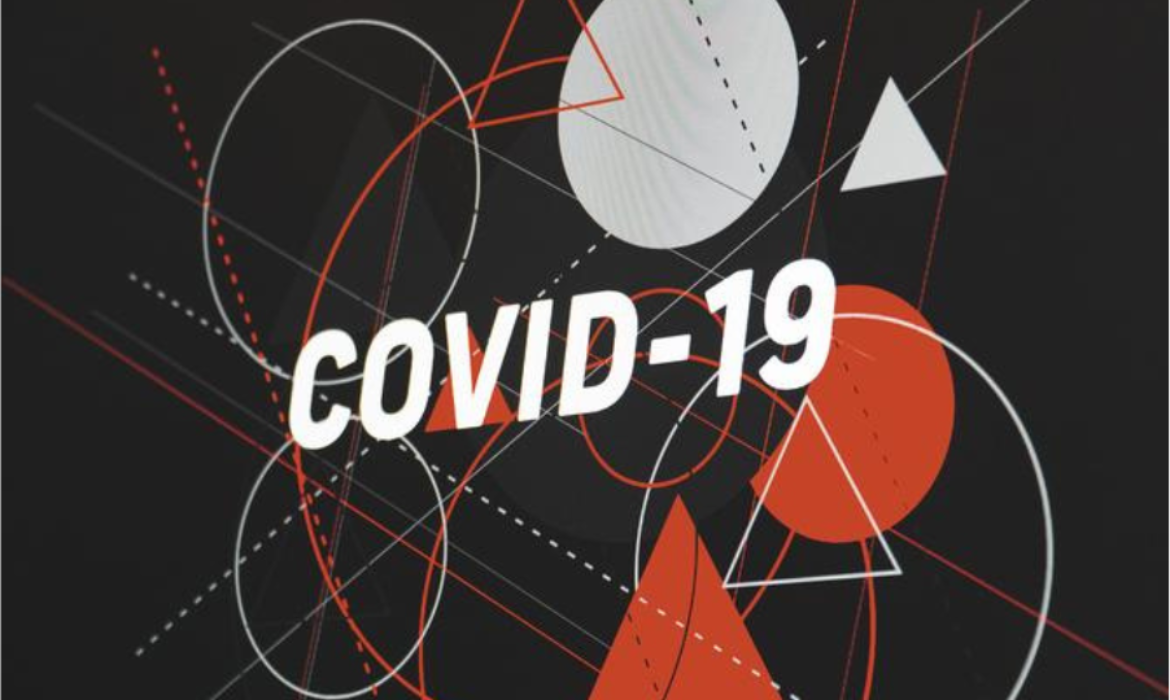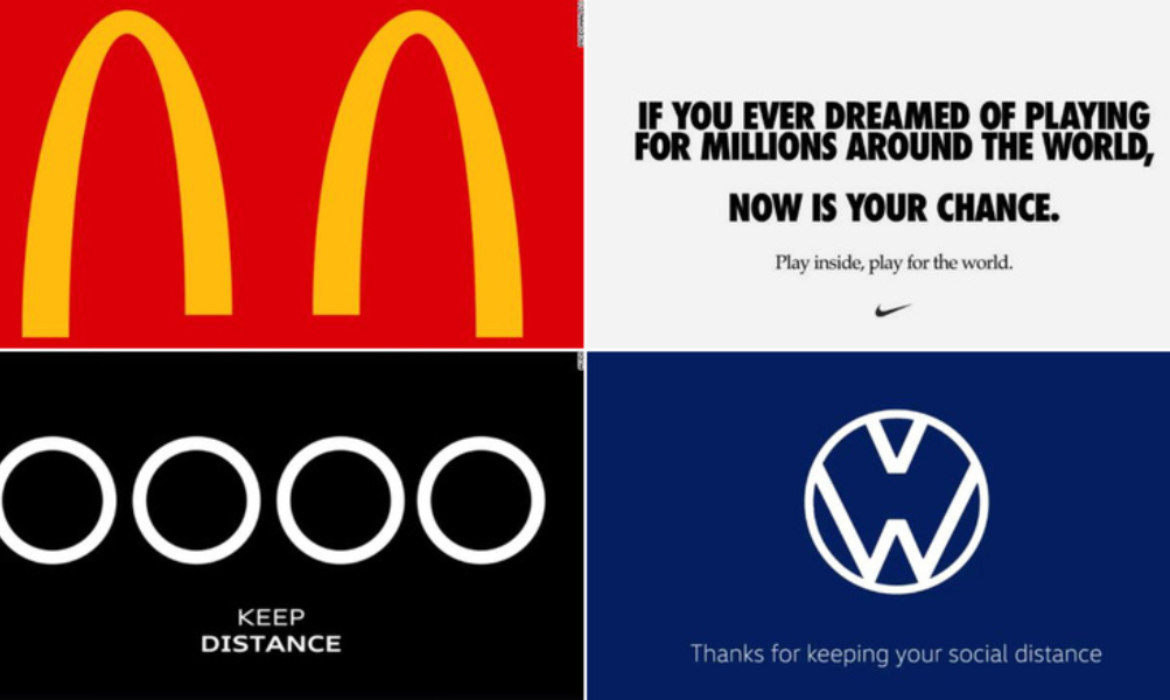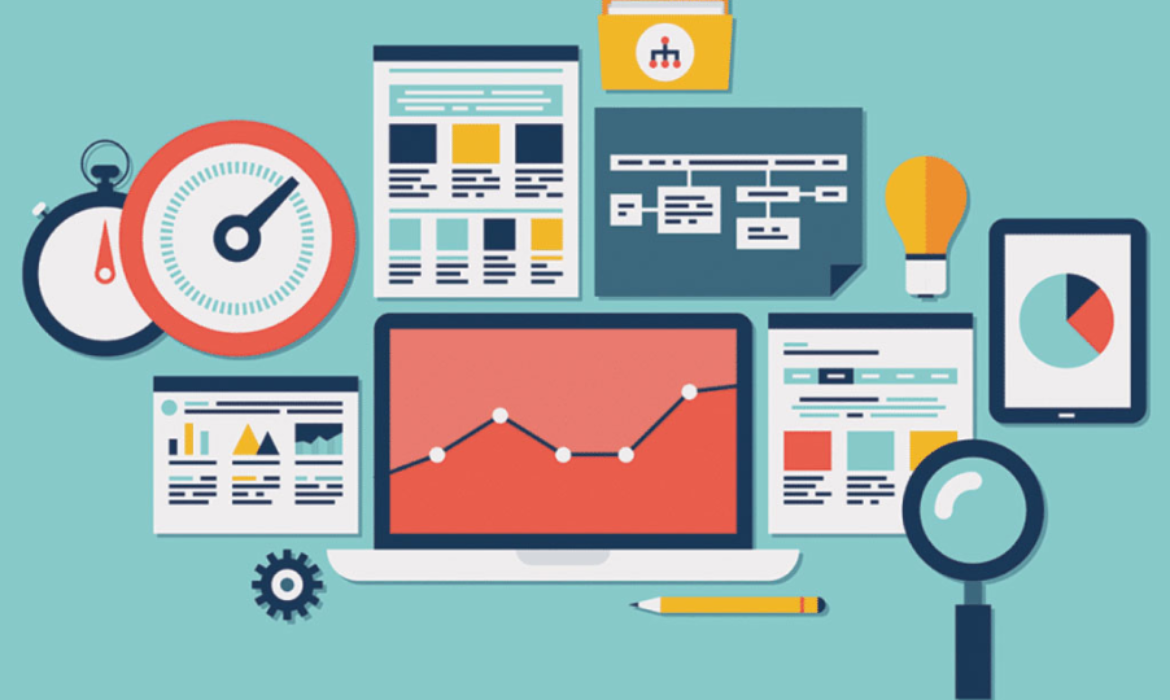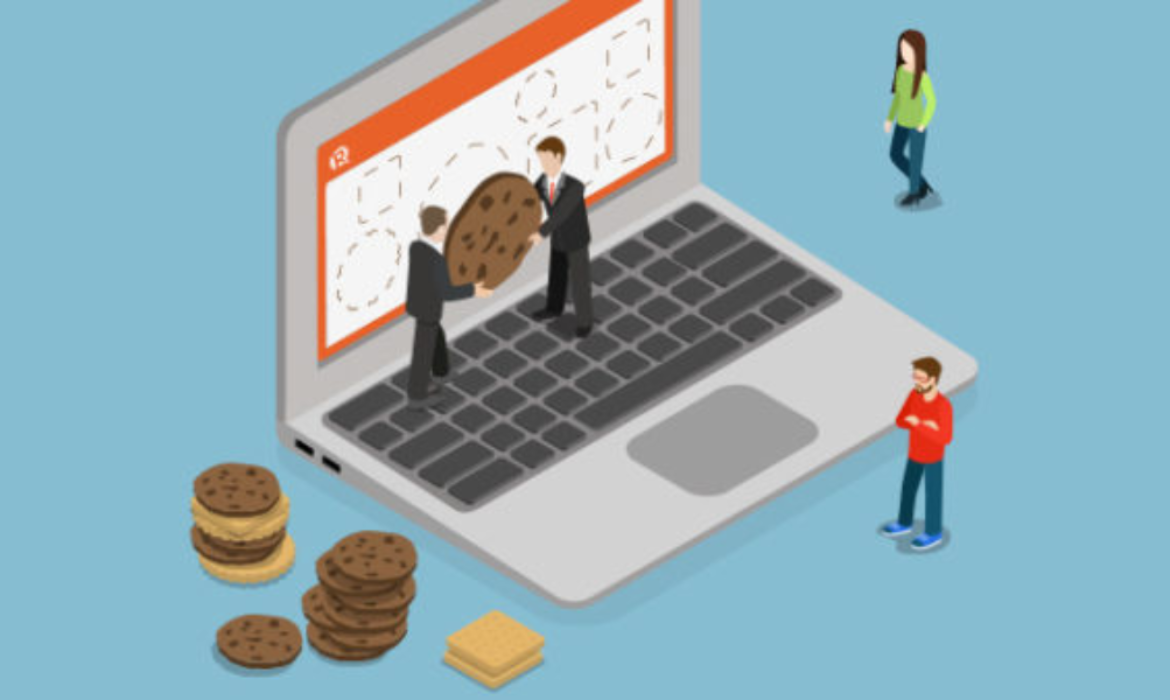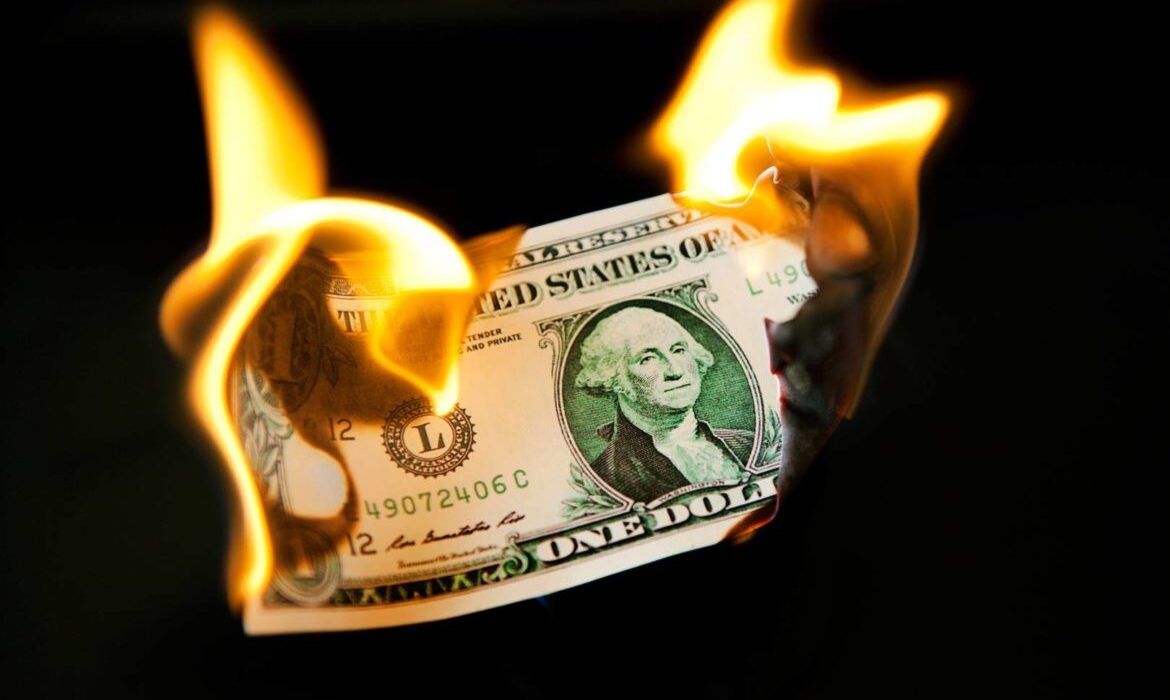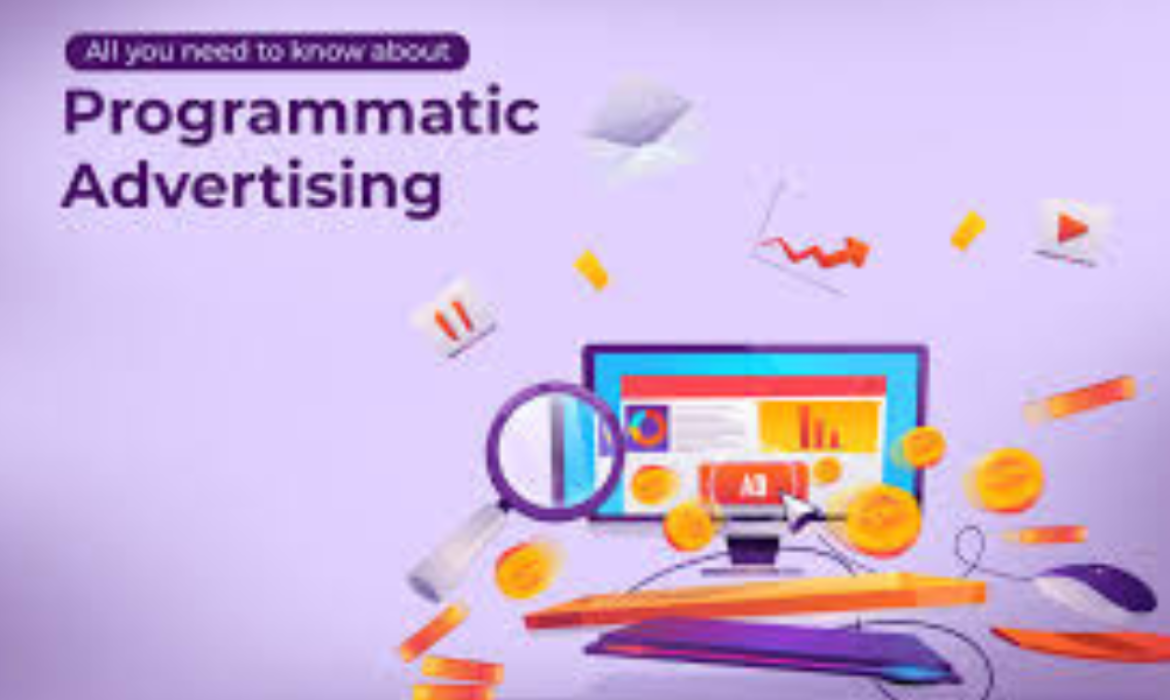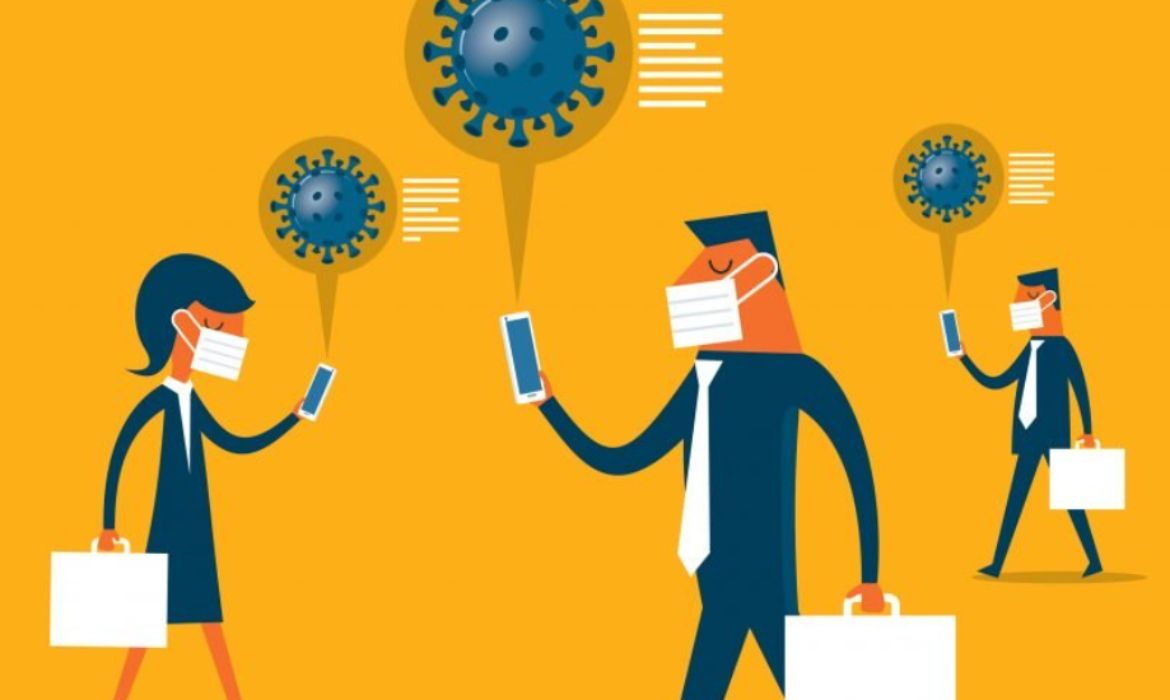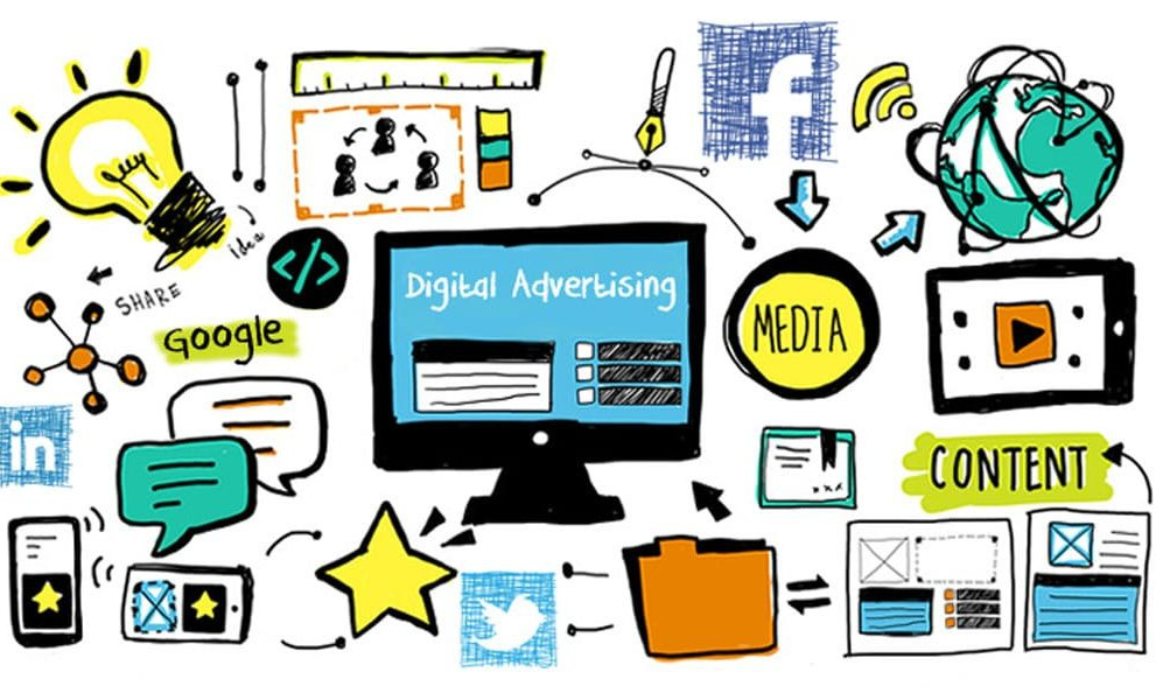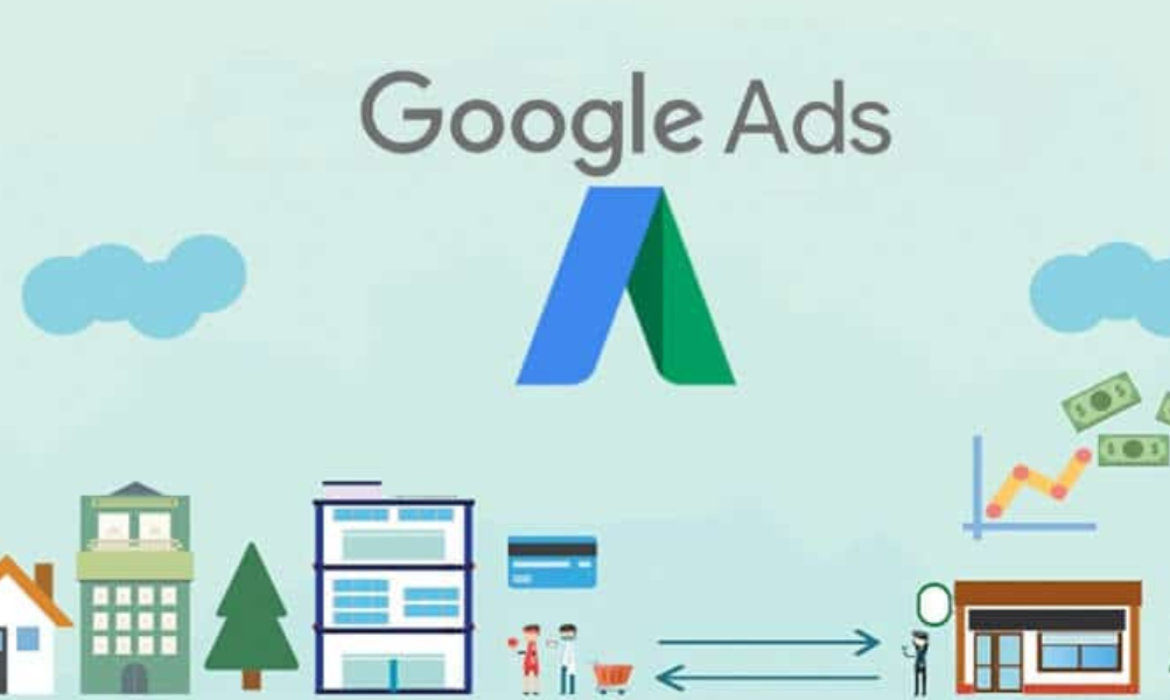COVID 19 Effect : How Could It Impact The Digital Ad Spend
The Great Recession was the lowest point in the history of advertising. The only time digital spend dropped in absolute terms was in 2009. However, according to the IAB survey of nearly 400 media buys and brands, 74 percent of buy-side decision-makers think coronavirus pandemic will have a larger impact on the digital ad spend than the 2008 financial crisis. The struggle against the ongoing coronavirus pandemic looks grim among the buy-side decision-makers.
Meanwhile, nearly a quarter of all respondents have paused all ad spend for the first and second quarters while another 46 percent have adjusted their media spend during the first half of the year as researched conducted by Interactive Advertising Bureau.
As quoted in Forbes, IAB President David Cohen said,
“This is what happens in times of crisis. Typically marketers will press pause for a moment, take a breath, assess the situation, replay and reevaluate.”
The COVID-19 crisis is going to have a material impact on the calendar year 2020. According to the report, the buy-side expects an increase in spending during May/June but no rebound for the final six months of the year.
The report suggests digital advertising to fair better than any other medium. Digital ad spends from March to June down by 33% compared to traditional media declined by 39%. Traditional out-of-the home advertising is highly affected by an estimated ad spend down by 51% for March and April and 41% for May and June. This makes sense considering people are home in self-isolation across countries, there would be fewer people to see billboards and digital displays.
With all the changes in the ad spend, 63 percent of advertisers are adjusting their messaging to focus on mission-based marketing and cause-related marketing. Meanwhile, tactical changes are also happening as a 38 percent plan to increase audience targeting and 35 percent plan to increase device marketing for OTT and CTV.
Media consumption is going to increase with this stay-at-home and work-from-home. The report also reflects that the crisis is going to hit the annual Upfronts in late April and May with Disney, Hulu, and Discovery pulling out as 73 percent of buyers said COVID-19 will impact their spending plans for 2020 and 2021. While 20 percent expect a decrease in their Upfront spends versus original plans.
Despite the bleak picture over the next few months, two-thirds of buyers are undecided for making any ad spend changes in Q3 and Q4 and 25 percent plan to make changes due to COVID-19. The IAB surveyed the marketers about the milestones they will be watching to calibrate their decisions. 65 percent said they will be watching the quarantine status while 49 percent are focused on the number of coronaviruses cases. Other milestones amongst the top five were business openings and closing (47%) and stock market (44%).
Speaking to Forbes, Sue Hogan, the IAB’s senior vice president of measurement expanded on the point,
“I would say that I think the optimism right now for the second half of 2020 is heartening,”
He further added,
“There’s definitely a pendulum swing in the minds of buyers to move from a pretty tight decrease in ad spend or pause entirely to what we hope will be close to planned by end of year.”
Brands Get Creative With Their Advertisements To Encourage Social Distancing
Who says Social Distancing can’t be creative? With creative advertisements, it surely can be!
- After Juan Delcan and Valentina Izaguirre’s Safety Match Art went viral, many iconic brands are getting creative with their advertisements to promote the importance of social distancing and creating advertisements to stay home during the coronavirus pandemic.
- As the situation around the world intensifies, the citizens of the world are called to understand and follow hygiene practices, self-isolation, and social distancing. Understandably, it is a challenging phase and including these behaviours in our day-to-day life isn’t easy. Unfortunately, there have been cases of defiance and indifference.
- Therefore, brands have stepped up to spread awareness on social distancing by altering the most essential element of their existence – Logos and slogans. While some consider it as a marketing gimmick and others as an incredible way to spread a vital message.
Whichever side you belong, take a look at brands like Audi, Fevicol, Nike and others spreading the message of “SOCIAL DISTANCING” on social media with their creative advertisements.
AUDI and VOLKSWAGEN
Held under the same ownership, Audi and Volkswagen tweaked their logos to promote social distancing messages on their social media accounts.
- AUDI
Audi took to Twitter to share a short video with a message “Stay at home, keep your distance, be healthy, support each other – we are in this together”. The post shows the interlocked rings of the luxury brand’s logo stretching out so it gets disconnected from each other to be four separate rings.
Keep your distance – stay together. Only together we make the difference. #AudiTogether pic.twitter.com/othOsjRRYA
— Audi (@AudiOfficial) March 26, 2020
- VOLKSWAGEN
Volkswagen also shared a similar video with a message “Thanks for keeping your social distance!” and separated the iconic V and W.
We are #Volkswagen. Thanks for keeping your social distance! #FlattenTheCurve pic.twitter.com/JeY27epjhl
— Volkswagen News (@volkswagen) March 23, 2020
MERCEDES BENZ
The automotive brand unveiled a logo on Instagram account designed by one of its employees Marcel Hobrath. The logo features an iconic three-pronged star implying to keep a safe distance from the outer circle.
https://www.instagram.com/p/B-XZizpC8DX/?utm_source=ig_embed
COCO-COLA
Coco-Cola is presently running its ad in New York’s Time Square which shows the usual interlocked letters are spaced out from each other with a slogan reading “Staying apart is the best way to stay united.”
Before experts jump to any conclusion that the brand is taking advantage of the situation, Coco-Cola through its Coco-Cola foundation has pledged to donate USD 13.5 million to five non-profit organizations in Canada and the United States for those involved in helping the affected to the pandemic.

Image Credit: The Coco-Cola Company
McDonald’s (BRAZIL)
One of the controversial logo changes from McDonald’s Brazil, which shows its iconic golden arches are pulled apart as posted on its Facebook page. Designed by ad agency DPZ&T, it explained that the distance between the customers and the company is temporary so that we can stay always together. McDonald’s is providing food through delivery and drive-thru.
It faced a backlash from consumers including Bernie Sanders, who tweeted about the company’s sick leave policy for its employees.

Image Credit: McDonald’s Facebook Page
IKEA
In Israel, advertising agency McCann designed IKEA assembly manual with a caption “Stay Home” showing a picture of the house with a key, lock and toilet paper.

Image Credit: Dezeen
CHIQUITA
The international provider of bananas and other fruits produce tweaked its logo on Instagram. It posted the logo without the iconic mascot and captioned the post saying she was “already home” and asked the followers “to do the same and protect yourself.” The social accounts of the brand are operated by Portugal-based digital agency Alice from the Young Network group. This post received positive feedback including heart emojis and claps.
https://www.instagram.com/p/B-E7kQjIj1D/?utm_source=ig_embed
ADIDAS
Sportswear manufacturer started a series #hometeam virtually to encourage everyone to be creative and fit while staying indoors.

Image credit: Money Control
MUCINEX
Mucinex created a series of informational ads promoting facts about COVID-19 to combat misinformation. The campaign promotes hand sanitization, maintain at least 6 feet distance, refrain from touching faces and debunks many myths. Each campaign directs people to visit website COVID-19facts.com run by the World Health Organization, John Hopkins and international experts.
Created by McCann New York and McCann Health New York in association with award-winning art illustrator Noma Bar, Mucinex’s campaign will run across all mediums to help calm people and provide the right information.

Image Credit: Money Control
NIKE
Nike didn’t tweak its logo but launched a social media campaign with a global roster of star athletes which includes NBA player LeBron James and golfer Tiger Woods. The campaign shows how these sports stars are practicing social distancing by “playing inside.”
Nike had to closed several of its global stores due to the pandemic. Many sports events like NBA and Olympics have been postponed or canceled. Earlier a logo was redesigned by Slovenia based creative director Jure Tovaljan with a catchphrase modified to “Just Don’t Do It” but the company opted to stick to its identity.
https://www.instagram.com/p/B-AguSsAL0o/?utm_source=ig_embed
MERCADO LIBRE
Argentina Ecommerce platform tweaked its logo from changing handshakes to elbow bumps.

Image Credit: India Television
FEVICOL
The world’s strongest adhesive product owned by Indian company Pidilite Industries tweaked its logo which showed two elephants pulling away from each other with a tagline in Hindi that means “For future bonding, maintain some distance today.”
https://www.instagram.com/p/B91G66rlS3q/?utm_source=ig_embed
Surely, this unique initiative of creative advertisements by brands can help to bring awareness to social distancing and encourage more people to adopt the practice.
AdLedger, Madhive Releases Study on Ad Tech Industry, Only 6% Satisfied with Current Digital Ecosystem
A survey by Industry Index suggests that just 6% of the industry is satisfied with the current digital advertising ecosystem. The survey was released by Adledger, non-profit research and development consortium developing the global technology solutions for the digital media in partnership with Madhive, a TV advertising solutions company.
More than 100 brands, advertisers and publishers were surveyed to understand the current and future state of adtech with only 6% are satisfied with the present ecosystem of digital advertising. Another 92% of respondents believe there is a need for an industry-wide revolution. Christiana Cacciapuoti, executive director at AdLedger said,
“Digital advertising is still suffering from the same issues of transparency, fraud and fragmentation. And it’s because we just keep slapping band-aids on a fundamentally broken system, when we need to be developing a new infrastructure that’s driven by innovative technologies.”
The figures come into light as the Australian Competition and Consumer Commission (ACCC) commences its inquiry into the adtech industry which it has described as ‘opaque’ and also calling for feedback from the industry.
“The AdTech ecosystem absolutely needs to be changed,” said Alysia Borsa, EVP/Chief Business & Data Officer at Meredith Corporation. She further added,
“There is a lack of transparency which leads to fraud, which leads to low quality, which leads to poor performance. It’s a really bad cycle.”
The other findings of the survey include, 83% of respondents believe cryptography can be used to create transparencies and efficiencies, most often agreeing that cryptography could improve problems associated with fraud (66%) and the ability to track results (66%). And 72% believe we will see significant integrations in the next five years.
Adam Helfgott, CEO at MadHive said,
“Sooner or later, the industry is going to realize that this dysfunctional relationship has got to end, and the only way to fix it is with next-generation technologies,”
“And with blockchain and cryptography already weeding out fraud and solving similar issues on OTT, it’s only a matter of time till the industry stands together and overhauls the system.”
MadHive, TEGNA and IBM originally founded AdLedger to unite the advertising industry towards developing next-generation technology standards that solve the current issues in the ecosystem.
Google rolls back Chrome’s cookie security measure due to COVID-19
Google is temporarily rolling back a recent privacy feature ‘SamSite Cookie’ it launched with Chrome 80, to ensure stability to websites amidst the coronavirus pandemic.
Justin Schuh, Director of Chrome Engineering said in the blog,
“In light of the extraordinary global circumstances due to COVID-19, we are temporarily rolling back the enforcement of SameSite cookie labeling, starting today.”
The SameSite policy was the change in how Chrome treated cookies. Before this policy, Chrome allowed more cookies including third-party by default. SameSite, however, has turned that default. With the release of Chrome 80 in February, Chrome began to enforce secure-by default handling of third-party cookies to improve privacy and limit tracking.
Google was planning to roll out this change slowly for all the users during the rest of the year and closely monitor the impact on the web. The SameSite cookies primary role would be to prevent third party domains from using browser cookie files to track users as they browsed on different sites across the internet. At a higher level, it meant a website owner should set a third-party cookie as being okay or else Chrome would block it.
Online advertisers and web analytics firms were most impacted by the changes that migrated to other tracking practices after the announcement of Google’s SameSite cookies. However, many government sites, banking, intranets, and others are using third-party cookies in other contexts.
The disabling of third-party cookies can cause some sites to break – even if SameSite cookies roughly shipped to 1% of the Chrome users. Therefore, temporary rollback will ensure that these small numbers of users are not much impacted. Many major sites were prepared for this change but Google said it wants
“to ensure stability for websites providing essential services including banking, online groceries, government services, and healthcare that facilitate our daily life during this time.”
Schuh further added that as they roll back enforcement, organizations, users or sites should see no disruption. As social distancing measures have been followed worldwide, reliance on online services has increased and any kind of disruptions can cause big issues especially if it is concerned with healthcare resources.
Google also said that they plan to resume the enforcement in the future and will give advance notice on their blog. This isn’t the only announcement that is affected by the outbreak. Google has also paused temporarily adding new features to Chrome and Chrome OS and focus on security and stability owing to adjustments in their work schedules.
Tech Giants Set To Lose billions in Ad revenue because of Coronavirus
The coronavirus has spread to 175 countries around the world, and it shows no sign of a slowdown. The virus has effectively shut down all major events around the world and has a major impact on the ad tech industry. Ad spending is falling off the cliff thanks to the disruption caused by the pandemic – major tech giants like Twitter, Google, Facebook, and others are expected to face the brunt of the slump in terms of losing billions of dollars in ad revenue this year.
Why we care
The losses aren’t going to weaken the companies but will put a dent in the extraordinary growth which everyone has experienced over the years.
Numbers speak louder
Cowen & Co. analysts estimate that the two internet giants together could see more than $44 billion worldwide ad revenue evaporate this year. They predict the following losses:
- Facebook: Drop of $15.7 billion, 19% down from the previous estimate.
- Google: Down by $28.6 billion, an 18% decline from the previous estimate.
- Twitter: Down by $701 million, 17.9% below estimate
- Snapchat: Drop by $977 million, 31.8% down from the previous estimate.
Global advertising revenue grows in the ballpark of the GDP rate. Therefore, the global economic slowdown directly affects the global advertising market.
The tech giants were forthcoming with the investors on the expected losses and here what they have to say.
- Facebook execs said in their blog post that the company has “seen a weakening in our ads business in countries taking aggressive actions to reduce the spread of COVID-19.
- Twitter announced in the press release that the company is “withdrawing its revenue and operating income guidance for the first quarter of 2020, due to the growing impact of COVID-19 on the global operating and economic environment and their effect on advertiser demand.”
That said, Both Google and Facebook will continue to make profits even with double-digit revenue drops. Analysts think the largest tech companies could emerge stronger from the coronavirus crisis than ever because of their healthy balance sheets.
U.S. Ad Revenue Growth Forecasts, FY2020
| All media | Forecast pre-epidemic | Forecast March 2020 |
| Excluding cyclical events
(Olympics, elections) |
4.4% | -4.4% |
| Including cyclical events | 6.6 | -2.8 |
| DIGITAL | ||
| Excluding cyclical events | 10.9% | 3.5% |
| Including cyclical events | 11.4 | 3.9 |
| Digital search | 11.6 | 4.5 |
| Digital social | 17.2 | 8.7 |
| Digital video | 14.2 | 8.3 |
| LINEAR MEDIA | ||
| Excluding cyclical events | -4.4% | -15.0% |
| Including cyclical events | 0.0 | -11.7 |
| National TV – excl. CE | -2.7 | -13.0 |
| National TV – incl. CE | -0.4 | -12.7 |
| Local TV – excl. CE | -4.5 | -14.4 |
| Local TV – incl. CE | 12.8 | 0.9 |
| Radio | -2.3 | -14.1 |
| -17.0 | -25.4 | |
| Out of home | 3.7 | -11.8 |
Image Credit: Axios Visuals
What is driving the news
All the advertising-based businesses are facing the COVID-19 risk but those who are dependent on the self-service advertising revenue from small businesses, which are now shut down will be highly affected in the short term.
As quoted in AXIOS, Vincent Letang, executive vice president and director of global forecasting for Magna Global, the media buying unit of global ad agency IPG said,
“In the first half of the year, digital media vendors will feel the heat. But I still think they will recover more strongly than traditional media in the second half.”
The tech platforms make their revenue by advertising on social media and search which will take a hit in the short term for two reasons:
1. They are self-serve which means anyone can buy ads through the automated platforms at any time without any contract. Therefore, unlike TV ad contracts, there are no policies in place and brands have to adhere to when pulling the plug.
2. Mostly the ads are purchased by small businesses. Letang expressed his views to Axios,
“Hundreds of thousands of small businesses who probably count for 70% of social and search, they will stop advertising for weeks as they are closed. For some of them, it will be hard to come back, as many won’t have the liquidity to start marketing.”
What’s the future
Analysts expect overall ad revenue to go down by 4.4% excluding cyclical events due to the coronavirus impact on the economy.
Growth in the digital ad market is dominated by big tech companies like Google, Facebook, Twitter, and Snapchat will emerge from the crisis strongly in 2021.
Magna predicts linear ad sales to decrease to 6 percent and digital media to grow 8 percent.
Programmatic Advertising Platforms in 2020: A Complete Guide
Adtech space is complex and many marketers are still unsure about programmatic advertising and its ecosystem. However, it is essential to understand, even in brief, basics of programmatic advertising and how it works. Eventually, it is the future of advertising.
As reported by Statista, programmatic ad spending worldwide was $106 billion in 2019. It is estimated to reach $127 billion in 2020 and further grow by $20 billion in 2021.
What is Programmatic Advertising?
It is also known as programmatic marketing or programmatic media. It can be described as automatic buying and optimizing digital campaigns through real-time auctions, where ads are bought at the same time when a visitor loads the website instead of buying directly from the publishers.
It allows you to target your audience. The artificial intelligence (AI) powered algorithms classifies users based on their demographic data, behavior, geographics, psychography, and other criteria to determine which ad to be shown to each user.
How does it work?
There are different components of the programmatic advertising ecosystem- Demand-side platform (DSP), Supply-side platform (SSP), data management platform(DMP), ad exchange, ad servers, and ad network.
The advertiser uses DSP to buy ad placements and DMP to utilize third-party data. Publishers use SSP to connect their inventory to the ad exchange and programmatic bids can be placed using AI. The auction takes place when the web is getting loaded and the highest bidding ad will appear when the web page is completely loaded. This includes ad slots for display, voice, mobile, video and others,

Image Credit: Medium
Now, we are clear on the concept of programmatic advertising, let’s look at the top 8 programmatic platforms of 2020 to help you make an informed choice about the best platform for your advertising.
Top Programmatic Platforms:
1.MediaMath:

MediaMath is a leading omnipresent programmatic marketing platform that offers end-to-end campaign management to the advertisers.
It is trusted by two-thirds of Fortune 500 companies and is partnered with many developers and agencies to improve business. MediaMath DMP helps marketers with the data sets from the first and third sources. In programmatic advertising, you are unable to view the placement of the ad until is it published. MediaMath assures brand safety and will refund money to the advertiser if the ad run next to offensive content.
The omnichannel DSP includes mobile, native, video, audio and Digital-out-of-home (DOOH) ads. Brain Insights and Brain OPtimization utilize predictive modeling to optimize the ad campaign.
2. TubeMogul

TubeMogul is a part of Adobe Advertising Cloud.
TubeMogul programmatic advertising software facilitates brands and agencies to plan, buy, measure and optimize their global advertising.
It specializes in video advertising and has developed the most comprehensive client training and award-winning customer service. They have helped clients to set up most sophisticated programmatic ads across the digital screen, television or digital out-of-home (DOOH) channels from a single platform. They also enable brands with access to premium ad inventory through a real-time bidding process.
In February 2016, it had launched the Non-Human Traffic Credit Program where advertisers will be compensated if traffic identified as non-humans by White Ops.
3.Smarty Ads:
 Smarty ads provide a full-stack advertising platform that caters to brands, agencies, publishers and app developers. It offers the world’s best solutions for advertising and monetization. This ecosystem includes the demand-side platform (DSP), supply-side platform (SSP), Data management platform (DMP) and ad exchange. It also offers a White label solution that allows a fully customizable advertising platform to launch your own business.
Smarty ads provide a full-stack advertising platform that caters to brands, agencies, publishers and app developers. It offers the world’s best solutions for advertising and monetization. This ecosystem includes the demand-side platform (DSP), supply-side platform (SSP), Data management platform (DMP) and ad exchange. It also offers a White label solution that allows a fully customizable advertising platform to launch your own business.
It also provides ad toolbox, analytics, blockchain ad stack, a customer data platform and rich targeting capabilities which helps advertisers with ad inventory, data visualization, transparency, and consolidated customer data to manage the campaign effectively. The platform also enables advertisers to run display, video, native, or in-app ads on desktop and mobile devices.
Smarty Ads’ header bidding technology allows publishers to offer inventory to all demand partners at the same time. Publishers can run a pre-bid auction to sell inventory at a premium price and generate a higher yield. Smarty Ads In-app header bidding provides advanced bidding to the mobile ecosystem. It is beneficial to app developers to uncover the real value of their digital inventory.
4.Pubmatic:
 Pubmatic is a programmatic digital advertising technology and solution provider to publishers, advertisers, app developers, and video publishers.
Pubmatic is a programmatic digital advertising technology and solution provider to publishers, advertisers, app developers, and video publishers.
Advertisers have access to inventory powered by real-time insights through Pubmatic’’s private marketplace. eMarketer reports that PMP’s are expected to comprise the majority of programmatic spending by 2021. Pubmatic Openwrap makes it easier for buying and selling inventory cross channels allowing digital advertising, in particular, video advertising to achieve full potential.
Pubmatic has launched a fraud-free program to maintain transparency and will provide credit if any fraud is suspected. Using Real-Time Bidding (RTB) technologies, publishers can drive the highest yield for each impression. Pubmatic safeguards publishers’ audiences across ad formats and screens leveraging manual and automated processes.
5. Simpli.fi

Simpli.fi is a leading localized programmatic advertising platform that enables the purchase of highly-targeted impressions on the real-time bidding process.
It has a network of largest buyers of local advertising including local media groups, multi-location brands, and trade desks. Simpli.fi aids companies to localize ad targeting, maximize the performance of local campaigns and optimize audiences.
Simpli.fi’s geo-fence technology is the most advanced location-based mobile advertising technology based on specific geographic shapes. Simpli.fi’s performance is unmatched through unstructured data and programmatic infrastructure. Advertisers can enhance audience targeting using CRM data and can optimize further in real-time using search and contextual keywords, IP data, dayparting, frequency capping and more.
It has developed an ecosystem of DSP, SSP, and DMP among other technologies.
6. Adroll:

Adroll growth marketing platform helps a brand to find audiences, personalize, cross channel experiences that make customers come back and measure your impact on the customer journey.
It combines first-party data with third-party data to give detailed shoppers insight which will help advertisers to identify and attract the audience that loves their brand.
7. Choozle:
 Choozle is a self-service digital advertising software platform built for marketers, publishers and agencies. It uses customer data to power programmatic advertising across mobile, video and display and other mediums from a single interface.
Choozle is a self-service digital advertising software platform built for marketers, publishers and agencies. It uses customer data to power programmatic advertising across mobile, video and display and other mediums from a single interface.
The self-serve tools allow advertisers to create hyper-targeted campaigns using first and third-party data. There is no minimum ad spent limit for any type of business. Choozle provides campaign set up, ad budget allocation, execution, and reporting.
8. Rubicon Project:
![]()
Rubicon Project created a new advertising model where it is automating the buying and selling of advertising. The automated advertising platform is used by leading publishers across the globe to transact with top brands enabling them to reach more than1 billion consumers.
How to choose the right programmatic ad platform?
There are many other DSPs’ except the above like Facebook ads, Adready, Centro, DoubleClick, Pulse point, AppNexus and many more. Given the vast options, how to select tools that are beneficial to your brand? There are few criteria to keep in mind while evaluating a programmatic ad platform.
1.Cost:
Pricing is a major deciding factor while considering a programmatic platform. There needs to be clarity on the minimum fee, upfront fee, training fee and the actual cost of media. Can the pricing be negotiated? Understand the cost structure and various fee structures.
2.Transparency:
It is an essential factor to consider as ad frauds are quite common. Therefore, ask about the safety measures implemented by the provider and show the inventory sources, placements and costs.
3.Technology:
Choose a programmatic advertising platform that provides technology and solutions suitable and customized for your campaign goals. The proprietary technology for every programmatic tool makes them different from others.
4.Ad targeting
Compare targeting options from each vendor before final selection. Does it provide private marketplaces? Does it use first party and third party data for brand safety? Does it have an advanced ad- target options and personalization capabilities?
5.Technical support:
What kind of technical support do they offer and how efficient it is?
Selecting the right platform is crucial, but it is not enough to execute a successful campaign. A planned programmatic strategy and implementation will help in accurate audience targeting and ultimately would yield desired results. Some of the popular brands have already achieved good results from the programmatic advertisement. Here are some popular programmatic advertising case studies which explain more about how this would be beneficial to your business.
Closing Words
The benefits of programmatic advertising are immense and certainly is the future of digital advertising. However, the big debate is about privacy wars that are presently going on. Brian O’Kelley, CEO of AppNexus said,
“48% of all digital advertising dollars accrue to just two companies – Facebook and Google”.
A response to this dominance is the technological consortiums like LiveRamp, App Nexus, Rocket fuel, MediaMath, and many others. With data privacy being a big concern for tech companies, these programmatic platforms are being less intrusive and invasive and moving towards people-based marketing.
If you are in the decision-making process to select any of the tools, do thorough research before diving in. Programmatic advertising is exciting and shows no signs of slowing down.
From Virtual Concerts to Classes, 9 Brands Respond To Corona Crisis In Their Own Style.
The rapidly spreading coronavirus is disrupting marketers including mandatory work from home, closing offices, cancelling events or tweaking advertisements. However, amidst the coronavirus crisis brands, media entities and others are taking actions to educate and inform the public about the pandemic while the world keeps its social distance.
Scroll through the article to know major actions taken by the brands as coronavirus has sent shockwaves across industries.
Kraft Heinz commits $12 million in money and food.
Kraft Heinz has committed to donating $12 million globally to ensure people across the globe have food in this crisis. The company will give $1.9 million in cash to hunger organization Feeding America in the U.S.A and provide $.4.7 million in products including Kraft Macaroni & Cheese, Heinz Gravy, Planters Nut Mixes, DEVOUR frozen meals to the food banks. They have also launched an internal campaign #WeGotYouAmerica for its U.S plant employees as they ramped up the food production to meet the consumer needs.
In the U.K, the company is partnering with a charity Magic Breakfast to provide 12 million healthy breakfasts to needy school children. In Canada, the company will make donations to the Food Bank of Canada which includes 100,000 boxes of KD/Kraft dinner.
CEO Miguel Patricio said,
“This donation is an immediate and impactful way we can help our neighbors in need around the world and help fill this critical gap.
Varsity Tutors launches Virtual Classes
The edtech company released a free product called Virtual school day for parents and teachers as schools are closed due to the coronavirus pandemic. It offers more than 20 hours of live, online classes in a variety of core subjects for students from kindergarten to 12th grade.
The Chief Marketing Officer Adam Weber said,
“We have 40,000 tutors and hundreds of thousands of students, and the vast majority of our business is done virtually.”
It offers as basic as maths and science to high enrichment courses such as Science of Pandemics and Stock Market Crashes.
Snapchat rolls out mental health tool “Here for You”
Amidst coronavirus spread, Snapchat rolled out mental health tool “Here For You” to help users who might be feeling anxious or stressed over the pandemic.
The company said it has added a coronavirus-specific section to the tool “that will provide Snapchatters from the Ad Council, World Health Organization, the CDC, Crisis Text Line, NHS, and other partners who are creating content on anxiety specifically related to coronavirus.”

Image Credit: The Verge
Free Services by Dish tv and Pop Sugar
Dish network-owned TV streaming services ‘Sling’ is offering a selection of content free to the viewers. This free service ‘Stay in and SLING’ is for the significant number of Americans who are stuck home due to the coronavirus outbreak.
Meanwhile, Popsugar is offering its paid app for free for a foreseeable future that features 5000 fitness classes.
One Medical offers a virtual care
The healthcare provider One Medical offers 24 x 7 virtual care to its members amidst coronavirus tension. It has added Coronavirus related questions to its app “Treat Me Now”. As on March 12, the company stated there is an 82% increase in video visits and 30 % consulted online that reduces the burden on the hospitals.
Hyundai revives Job loss Protection
As coronavirus is increasing rapidly, the economy is sinking. (Read how it is affecting the digital advertising industry)It is giving a challenging time to automobile companies who are facing low demand for big-ticket items like cars. It has revived the recession-era program “Assurance Job Loss Protection” that assures to make up to six months of payments for drivers who lose their job or have purchased between March 14 to April 30.
The CEO of Hyundai Motor North America stated in a press release,
“Bringing back the job loss protection program in this unprecedented time will allow our customers to have one less thing to worry about if something unexpected happens to their employment status.”
Dickey’s Barbeque Pit starts Contactless Delivery
Dickey’s Barbeque Pit launches a contactless delivery option for customers who order through the website or app. The delivery orders will be pre-sealed to avoid any tampering.
The company said,
“Guests who order Dickey’s for delivery can have peace of mind knowing their order has been carefully prepared by a certified Pit Master and sealed prior to delivery.”
Facebook pledges $100 Million for Small Businesses impacted by the coronavirus
In response to the coronavirus outbreak, Facebook has concentrated on fighting the spreading of misinformation by offering free WHO ads and banning false cures. It has pledged to invest $100 million in 30,000 small businesses affected by the pandemic in 30 countries where the employees work and live. The financial assistance will be in the form of cash and ad credit. In a Facebook post, Sheryl Sandberg shared,
“Small businesses are the heartbeat of our communities, and many of the people who run these businesses are heavily affected by the crisis – especially as more and more people sensibly stay home.”
She further added to create a virtual training to support business in this new and unsettling environment through its e-learning platform Blueprint. It will also give a $1000 bonus to all the employees of Facebook.
Evolution of Digital Advertising: Happy 25th Digital Advertising And Many More To Come
“ We have the technology, finally, that for the first time in human history allows people to really maintain rich connections with much large numbers of people.” -Pierre Omidyar
The medium which has genuinely changed the landscape of advertising is the internet. It is the single biggest event in the past two decades that has truly revolutionized the ad viewing experience. Considering the high volumes of digital advertising, it is surprising to see how young it is and far it has come. Let’s understand the exponential growth of the internet advertising market.
At the beginning of 90’s the investment in digital advertising was zero. But over the years it has increased multiple-folds and total ad spending worldwide in 2019 will rise by 17.6% to $333.25 bn.

Image Credit: eMarketer
Even though the journey of digital advertising has been short but quite intense. In the last 25 years, a key factor in the rapid rise of digital advertising is technological innovations. From banner ads to artificial intelligence, digital advertising has made an eventful journey to deliver the right content to the right potential customer at the right time. But how much has it evolved over the years? Let’s take a trip down memory lane and explore the evolution of digital advertising.
The Advent of Digital Advertising
When computers were introduced in the 1970s, it was a simple device to exchange e-mails and digital information. Little was known, that it will have such a huge impact on digital advertising. Many marketing pioneers perceived it as a big business opportunity as the number of connected people grew. Within a few years, we witnessed different types of ads that connected with the audience.
In 1995, the total number of internet users was 16 million worldwide and subsequently reached 558 million in 2002.
- The Banner Era (1994-1996):
The first online advertisement appeared in the year 1994 marking the start of digital advertising. The oldest and first online banner ad by At&T appeared on Hotwired magazine with a run time of three months for a price of $30,000. The ad produced click-through rates of 44%. Following the success of AT&T, online display ads became popular and advertisers were looking for ways to better target ads mostly bases on consumer demographics.
From the early start, advertisers were aware that internet advertising is different from traditional advertising. The businesses began to comprehend that messages through email are cost-effective than traditional advertising. The internet became a playing field and investors enjoyed the novelty factor of it. It was a lucrative business so many entrepreneurs, investors, and advertisers started investing in this money-making machine.
Meanwhile, in 1995, Yahoo was launched and became the primary search engine. In its heyday, it charged up to $30 to $100 to run the banner ads. Back then, advertisers were required to provide the standard 468 x 60px banner ad for online campaigns. (see below)

Image Credit: 1st Webdesigner
In the same year, one of the first ad-serving technologies ‘Double Click’ was launched with an intent to track the performance of the ads and ROI on it. In 1997, Pop-up ads were invented to gain the attention of ad-blind users but soon it became a bane of online advertising that led to pop-up ad blockers.

Image Credit: 1st 1webdesigner
- Channel Era (1999-2000)
This period saw the rise and fall of online advertising.
The web was expanding rapidly and the number of websites was increased day-by-day. The year 1998 saw the birth of the Google search engine– a player to this day dominates the digital advertising industry and revolutionized advertising forever with the launch of its ad system ‘Google Adwords’ in 2000. The main objective of Google Adwords was sponsored search experience that didn’t undermine the quality and relevance of search results through the Google Quality Score model which is still used today.
At the same time, ‘Mobile Advertising’ made its debut.’
Online advertising was at its peak in the late 1990s and investors were investing in millions in dot-com startups. $8.2 billion were invested in online advertising between 1995 and 2000.
In mid-2000, the first-ever code was written for Adblocker which led to the beginning of a battle between publishers and adblocking. In 2002, Google revamped Adwords, introducing the option to advertise using the Pay-Per-Click (PPC) model. The year 2003 and 2004 marked launches of two prominent platforms LinkedIn and Facebook respectively. Exactly, one month after the launch, Facebook delivers its first advertisement in the form of banner ads called ‘Facebook Flyers’.
However, mid-2000 witnessed the biggest downfall as the dotcom bubble bursts. The huge influx of money that created the online advertising bubble began to dry up and the value of internet-based companies was decreasing. The stock market collapsed leading to recession. Many companies’ stock prices fell sharply and others shut down.

Image Credit: 1stwebdesigner
The only company that survived the dotcom bust was Google who took the opportunities that it had to offer in their stride and filled in the space left by the players.
- Social Era (2005-2008)
After the bubble burst, internet advertising saw a decline except for search engine technology. The highly efficient and dependable search engine technology market grew to USD 2.3 billion in 2003.
Meanwhile, in 2005 YouTube- the world’s largest video advertising platform made its debut and in the following year, Google purchases YouTube for $1.65 billion. The social network brought a new form of customer participation. It gives you the freedom to like, share or rate information. YouTube offered companies to promote their product and services on the most valued media platform by consumers ‘Video’ without any big investments.
In 2006, Facebook introduces sponsored links and smaller display ads that concentrate on user demographics and interest. Around the same time, a major advertising platform Twitter was launched with a concept of communication-based in 140 characters and making hashtag a household word. The introduction of the iPhone in 2007 was a major tipping point in mobile advertising. Social networks offer many opportunities to reach potential and existing customers.
- The Native Era (2009-2011)
As the number of companies advertising through the internet increased, advertisers began to look for less conspicuous ways to promote products. Due to this, the use of native advertising gained momentum and was on a rise as a result of higher CTR and engagement.
The year 2010 gave birth to Instagram exclusively for iOS devices. In a matter of time, it became popular marketing and advertising platform which later was purchased by Facebook. In the following year, Snapchat was created and it supported the widespread use of video with augmented-reality enabled filters that have created a stir amongst millennials.
Twitter introduced promoted tweets and paid advertisements to celebrities. Promoted tweets allowed users to reach a larger audience and generate more engagement from the existing and new followers whereas paid advertisement means sponsored tweets. Businesses recruit celebrities to promote their brands and services to their followers. For instance, Charlie Sheen made a record as he became the first person to reach 1 million followers in 25 hours after his account was created. A few days later, he started to sponsor tweets through ad.ly
- The Modern Era (2012- present)
Since 2004, digital advertising has recovered from the downfall and advertisers have accepted the importance of online advertising. Digital advertising is more sophisticated with innovative technologies and branding tools.it more interactive and uses Flash and Java for graphics.
In 2012, the Internet of Things(IoT) came into picture influencing marketing and advertising. In the next few years, there were many interesting developments. Instagram introduced sponsored posts allowing users to run ads by promoting old or new posts. In 2014, Pinterest made its debut with social media advertising growing bigger.
The growing adoption of smartphones hinted advertisers to focus on in-app mobile advertising and leave the mobile web browser. For instance, voice technology ‘Alexa’ allows users to do voice searches. The year 2015 witnessed mobile ad traffic surpass Web traffic- IAB UK reported for the first time mobile overtakes desktop with total spend hitting £4.8bn mark. Video consumption proved to be the strongest area.
Real-Time marketing became a buzzword. In 2016, Pokemon Go became a sensation. A classic example of augmented-reality on mobile devices attracted more than 45 million users. In 2017, two technological development came happened. Firstly, Ad.txts that were introduced by IAB Tech to improve transparency in the programmatic advertising ecosystem. Secondly, Apple announced AR Kit and Google followed with AR core for mobile AR apps and advertising.
The growing use of voice technology, artificial intelligence, and other digital technologies introduces new areas of advertising. A key point to include is an in-depth understanding of consumer behavior and delivering personalized and relevant advertisements.
The European Union’s General Data Protection Regulation (GDPR) was implemented in May imposing restrictions on companies to change the way of collecting data, protecting the privacy and personal information of the users. Even California passed a strict privacy law that changes the data collection method. Conforming to the recent changes, digital advertising Industry plans to replace Cookies with First-Party Data.
Wrapping up
In this phase of digital transformation, the top priority of companies is to provide a personalized end-to-end customer experience in real-time. Millions of advertisers, marketers, companies, or businesses are relying on digital advertising.
After Coronavirus Pandemic, Economic Downturn Awaits Ad Industry
Hello! At first, hope you all are safe, healthy, and isolated in these trying times.
Last week due to the rapid rise of coronavirus, all events and big announcements in the ad tech industry were cancelled and companies shifted to work remotely. However, there is an unexpected sting in the tail – the economy is slipping into recession.
Initially, the advertisers thought the impact of coronavirus would be short but now they are preparing for its effects to stay for months. With the economists warning that a global recession is underway, the global markets witnessed a sharp fall. On the other hand, the investors feared coronavirus would stunt the economic growth resulting in a market crash of 3000 points from the Dow Jones and the value of stocks falling steeply. The advertising executives think the coronavirus pandemic means normal business is on hold indefinitely.
According to a report from research firm eMarketer, a reduction in the growth of advertising is expected on a global scale due to COVID-19. The firm said the global ad spend is expected to be $691.7 billion, down from the earlier estimate of $712 billion. The total ad spending of China, the second-largest ad market is expected to reach $113. 7 billion, down from the previous estimate of $121.13 billion.
Many business events and pitches worth millions of dollars have been postponed until the coronavirus stabilizes. While it is early to predict the overall economic outcome due to coronavirus outbreak, however economists like IAB Europe’s Daniel Knapp warns a situation similar to the 2008 recession. However, that recession was driven by the issues in the financial system, currently, coronavirus is creating the collapse of the consumer demands across sectors weakening the economic activities around the world.
The impact of coronavirus pandemic on advertising has begun to sink in. As quoted by the DigiDay, David Indo, CEO of ID Comms said,
“We are facing unprecedented market conditions and many advertisers have sensibly focused on protecting key business and commercial requirements.”
He further added,
“A significant number of pitch plans are being paused and placed on hold until the situation clarifies. The result could be an avalanche of reviews through the second half of the year or perhaps a delay until the beginning of 2021.”
The biggest impact of the coronavirus pandemic has been a major disruption to supply chains. For instance, Apple witness a shortage of iPhone supply in China. As a result, it established Foxconn as a primary manufacturer. Currently, the production is shut down in China reducing the forecast in iPhone shipments in Q1 by as much as 10% according to Apple analyst Ming-Chi Kuo cited by MacRumors. Some advertisers like Adidas and AB InBev are pulling out dollars from China because of coronavirus overturning the ability to sell ads whereas others with streaming services are wary to take more ads as it might look that they are trying to gain more profit from people forced to stay at home.
Cancelled events and travel restrictions refer to fewer people travelling which means business metrics like return on advertising spend are in freefall for travel companies. According to Gareth Owen, MD of independent agency network TiPi Group, certain verticals like travel are trying to cut down on advertising and their travel clients aren’t bidding on the keywords that usually drive sales as a part of cuts to pay-to-click strategies that have also stopped display budgets.
Speaking to DigiDay, Christian Gladwell, Global CEO, M&C Saatchi Performance expanded on the point,
“The virus is bad news for performance marketing budgets if they are only employed at a low stage of the funnel that’s acquiring the media within a narrow cost per action range.”
The problems of the travel industry and event organizers are becoming a part of the ad industry as well. For example, influencers looking for collaboration on lucrative projects are suspended for two reasons – no travel or event is cancelled. Even though only a few travel and tourism campaigns and brand sponsorships have been cancelled by companies, but if the situation gets worst it can have serious repercussions on the influencer’s income
The outbreak has even halted the shooting of movies and series at various stages of production. This can cause monetary damage to the production houses and channels. Therefore, insurance is a big consideration for them as the outbreak comes under force majeure ‘clauses in the contract and is not covered in any policy. Alternatives, like repurposing old footage or investing in animation, is being considered as neither requires to shoot.
Google Gives A New Look For Attribution Reports in Google Ads
Google this month updated the attribution report in Google Ads. The name is also changed from Search Attribution to Attribution which means reporting is limited to Google ads universe. This new update streamlines the reporting. Google in its blog said,
“ The new experience can help you quickly understand how customers interact with your marketing throughout the purchase cycle, making it easy for you to take action in the areas that are driving results.”
Along with the overview report, attribution reports in Google Ads include top paths, path metrics, assisted conversions, and model comparison.
The revamped overview report helps advertisers to visualize the customers’ path to conversion. You can note the percentage of customer conversions after multiple clicks on your ads. Device analysis shows customer conversion from more than one device.
Charles Huyi, Product Manager, Google Ads in the announcement said,
“Every business is different, so reports cover a range of insights – from the most common sequences of ad interactions leading up to a conversion, to how much credit is assigned to each interaction along the way,”

Image Credit: Google Ads
The model comparison report helps advertisers to compare cost per conversion and return on ad spend for different attribution models such as last click, rule-based and data-driven attribution.
Google Ads offers several attribution models like the last click, first click, linear, time decay, position-based and data-driven.

Image Credit: Google Ads
The streamlined reports make it easy to navigate but you may not find the same things as in the old reports. In order to access attribution reports in Google ads, click on the Tools icon in the upper right, under Measurement, select Attribution.

